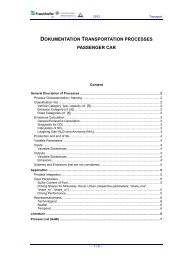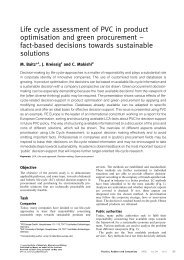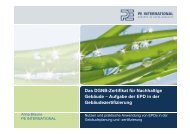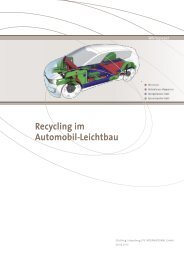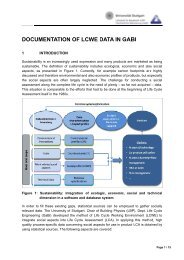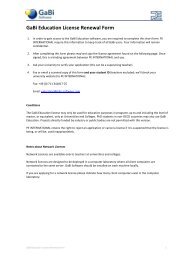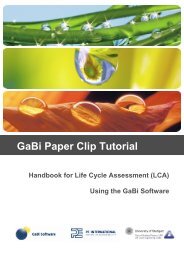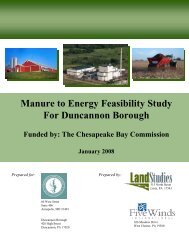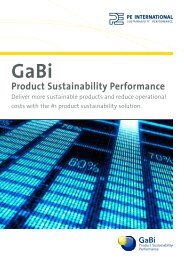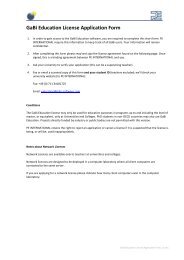GaBi Paper Clip Tutorial - GaBi Software
GaBi Paper Clip Tutorial - GaBi Software
GaBi Paper Clip Tutorial - GaBi Software
Create successful ePaper yourself
Turn your PDF publications into a flip-book with our unique Google optimized e-Paper software.
Conducting Life Cycle Assessments<br />
which functions they should have and how differences are taken into consideration in the<br />
case where one product has more functions than the other.<br />
2.1.2.2 Functional Unit<br />
The functional unit is the quantified definition of the function of a product. For example, the<br />
functional unit of an aluminum beverage can might be defined as packaging 330ml of<br />
beverage, protecting it from UV radiation and oxidation and keeping in the carbonic acid<br />
for at least half a year. The ability to drink the beverages directly out of the packaging<br />
might be an additional function which should be taken into account.<br />
In order to compare two products, their functional units must be equivalent. For example,<br />
both glass bottles and cartons are used for milk packaging. Since the most common size<br />
for each packaging type might differ, the functional unit is set to be the packaging for 1000<br />
liters of milk in order to compare the two packaging systems properly.<br />
Defining the functional unit can be difficult because the performance of products is not<br />
always easy to describe or isolate.<br />
Part of defining a functional unit is the definition of a reference flow. The reference flow is<br />
the measure of product components and materials needed to fulfill the function, as defined<br />
by the functional unit. All data collected during the inventory phase is related to the<br />
reference flow. In other words, all data used in the LCA must be calculated or scaled in<br />
accordance with this reference flow.<br />
2.1.2.3 System Boundaries<br />
The system boundary defines which processes will be included in, or excluded from, the<br />
system; i.e. the LCA.<br />
It is helpful to describe the system using a process flow diagram showing the processes<br />
and their relationships. Figure 3 shows a generic process flow diagram with all processes<br />
included in the LCA shown inside the box marked as the System Boundary.<br />
13



